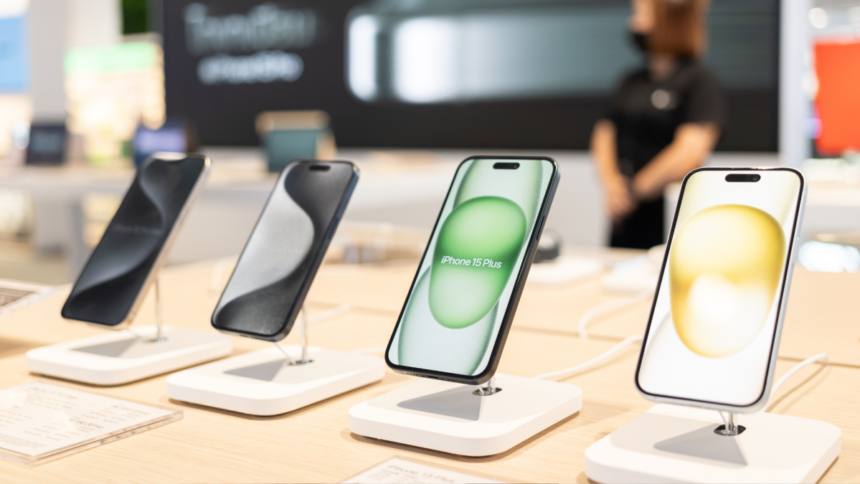Navigating Technology Purchases Amid Rising Tariffs
The current landscape of tariffs has been a hot topic lately. Since February, the Trump administration has been implementing tariffs on various countries, with initial rates starting at 10% for China alone, later escalating dramatically. Other nations have faced threats of tariffs that seem to shift unpredictably, creating uncertainty that affects not just the market, but also consumers and businesses.
Amid this confusion, discussions around rising prices for consumer products abound. For instance, news about the rising cost of items like the iPhone has sparked urgency among buyers to purchase before further increases take effect. The situation escalated to the point where Apple reportedly airlifted large shipments of iPhones into the market to avoid tariff-related price hikes.
Will Devices Become More Expensive?
The truth is, the future remains uncertain. The stability of current tariffs is unclear, with Trump recently announcing a temporary halt on various tariffs, apart from those affecting China, which has seen an increase from 104% to 125%. Regardless, the overarching 10% tariffs still apply throughout the U.S.
This could suggest a less severe outlook for consumer goods from countries under the temporary tariff pause. For example, shoppers buying from India would only face the original 10% tariff, as opposed to the 27% implemented recently. This also applies to Vietnam, which faces a rate of 46%.
Despite the temporary reprieves, many U.S. trading partners continue to face various tariffs, notably China. This reality means businesses may pass these costs onto consumers, whether the tariff is 10% or as high as 125%.
For example, if the upcoming iPhone 16e is manufactured in India, it could see a price increase of about $66, pushing the $599 price tag to nearly $660. Conversely, if produced in China, the price could surge dramatically to approximately $1,348 due to the steep tariff. What once seemed like an affordable option can quickly become inaccessible.
It’s worth noting, though, that it’s uncertain whether companies like Apple will choose to fully transfer these costs to consumers. There’s no definitive way to predict corporate strategies in response to tariffs; some businesses have even halted U.S. sales entirely. Certain firms have opted for sales pauses rather than price hikes.
Experts do contend, however, that many companies will rate hikes in response to elevated import costs. For instance, Acer indicated a 10% increase back in February, but the implications of new tariffs on that rate remain unclear. While it’s difficult to ascertain if the price of an iPhone 16e will exceed its current $599, a substantial increase seems likely.
Purchasing New Technology: A Thoughtful Approach
Amid these discussions, it’s easy to feel the urge to update to the latest tech. The potential for increased prices might prompt immediate purchases, but it’s essential to consider whether upgrading is necessary.
If existing devices meet personal needs effectively, there’s no reason to rush into a new purchase merely due to impending price increases. With significant investments already made in technology, retaining it longer when it functions well could be wise.
Moreover, even older devices can be revitalized for extended use. A simple battery replacement can enhance both longevity and performance, as aging batteries often lead to diminished functionality. Additionally, ensuring devices have ample storage space can prevent performance lags.
For laptops, numerous practices can extend their usefulness. Performing a wipe and reinstall could eliminate unnecessary bloat, while optimizing settings in demanding applications can enhance performance. For tech enthusiasts, physically cleaning parts such as fans adds another level of maintenance that keeps devices running smoothly.
When Purchasing New Technology is Necessary
On the flip side, certain situations necessitate buying new devices—be it through accidents or simply a desire for an upgrade. When faced with these circumstances, it’s prudent to consider options that won’t break the bank while still fulfilling desired functionalities.
The market for certified refurbished or used devices also presents a valuable opportunity to save, with retailers like Amazon and Best Buy offering warranties on such purchases. Exploring sites like Reebelo can yield additional savings.
While it’s true that used models may also see price shifts due to tariffs, devices that are already positioned in warehouse inventories won’t be directly influenced by incoming import taxes.
The Case for Buying New Technology
Nevertheless, there are valid reasons for opting for the latest technology. In moments of technological advancement, such as smart home systems, the benefits of current tech often supersede older iterations that may become obsolete quickly. Incompatibility with newer systems can arise when choosing outdated gear.
The advantage of purchasing contemporary tech is the assurance of reliable support and no compatibility dilemmas. New devices also eliminate concerns regarding past issues that may not have been disclosed during the resale. Investing in the latest model guarantees access to the newest features and capabilities.
Financially, acquiring the newest devices may also hold advantages—for example, when a wireless carrier presents enticing deals that equalize costs between the latest model and older versions. With the possibility of prices rising due to tariffs, taking advantage of current offers may be a strategic move.
For instance, even with Apple’s M-series lineup, the recommended latest M4 MacBook Air priced at $999 represents a great value, often surpassing previous iterations like the M2 or M3. However, if tariffs do affect consumer pricing, this favorable deal could quickly vanish.
To Rush or Not to Rush? A Balanced Approach
Reflecting on the above insights, if the need for a new MacBook arises, it would be advisable to buy the M4 while prices are still stable. However, if the current laptop continues to function adequately, delaying the purchase could lead to better financial decisions later, perhaps even considering previous models that still hold value.
In conclusion, while prices may climb, a strategic focus on necessity versus desire can guide tech purchases in this fluctuating tariff environment. Invest wisely—buy only what is necessary and wait on further purchases where feasible. Should you decide to upgrade later, consider earlier models that retain practicality and value.












